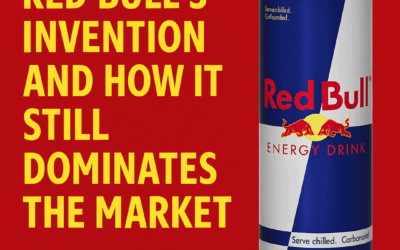What do monks, Glasgow nightclubs, and viral memes have in common?
One answer: Buckfast Tonic Wine affectionately called “Bucky” by locals, and equally blamed and beloved across Scotland.
Buckfast is no ordinary bottle on the shelf. It’s become a cultural symbol, a punchline, a scapegoat, and a rite of passage all in one. But how did a fortified wine made by English Benedictine monks become so deeply intertwined with Scottish identity, especially in the central belt?
Let’s explore the complicated relationship Scotland has with Buckfast.
While whisky and Tennent’s dominate the drinks scene, Buckfast’s cult status tells another story.
A Quick History of Buckfast
Buckfast was first produced in the 1890s by Benedictine monks at Buckfast Abbey in Devon, England. Originally marketed as a medicinal tonic with the tagline “Three small glasses a day, for good health and lively blood,” it was later commercialised and fortified.
It contains 15% alcohol and significantly more caffeine than typical wines, thanks to added caffeine (around 37.5mg per 100ml, almost the same as a Red Bull).
Today, it’s no longer widely consumed in England but in Scotland? That’s another story.
Buckfast gained popularity in Scotland in the 1990s and early 2000s, especially in working-class areas like Glasgow, Lanarkshire, and West Lothian. It’s often associated with:
- Scheme culture (Scottish slang for low-income housing estates)
- Pre-drinks among young adults
- Club nights and music scenes (especially gabber, techno, and hardcore)
- Memes, it’s become part of internet culture, with Buckfast-themed merch, murals, and even cakes.
Its recognisable deep brown bottle with a yellow label has become iconically Scottish even if it isn’t actually from Scotland.
Buckfast often appears during the wild nights of the Edinburgh Fringe Festival, another cultural cornerstone.
The Public Backlash
Despite (or because of) its popularity, Buckfast has become a frequent target of criticism. Police reports have linked the drink to incidents of antisocial behaviour, youth violence, and street crime. In a 2010 report, BBC News highlighted that Buckfast had been mentioned in over 5,000 crime reports in Scotland in just three years.
Many politicians and health campaigners have called for it to be banned, restricted, or reformulated.
But the makers of Buckfast and many loyal fans push back. They argue:
“People don’t commit crime because of Buckfast. They happen to be drinking it.”
The company behind Buckfast, J. Chandler & Co., claims they sell responsibly and shouldn’t be blamed for social issues rooted in poverty, lack of opportunities, or poor mental health.
For many Scots, especially millennials and Gen Z, Buckfast has moved beyond just being a drink. It’s a cultural in-joke, a symbol of working-class pride, rebellion, and shared experience.
- It’s cheap, effective, and nostalgic.
- It shows up at house parties, festivals, and stag dos.
- It’s often worn ironically on t-shirts, hoodies, and even kilts.
Even tourists are catching on. You’ll find it in Edinburgh shops, graffiti murals in Glasgow, and photo ops across TikTok and Instagram.
If you’re visiting Scotland, don’t forget to check out our guide on vegan vs vegetarian food in the UK.
Buckfast as a Mirror of Scotland
The Buckfast debate is really about something deeper:
Class, identity, and who gets blamed when things go wrong.
Just as Irn-Bru is celebrated as “Scotland’s other national drink,” Buckfast represents something grittier, more underground, and more controversial but no less Scottish.
It’s both an outsider drink and an insider icon.
Whether you sip it at a party, mix it into a cocktail, or just laugh at the memes, Buckfast remains one of the most divisive bottles in the UK.
It’s not just a drink. It’s a conversation starter, a cultural artefact, and maybe even a mirror.
So, would you give Buckfast a try? order on Goldenacrewines.com.
